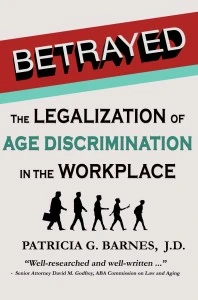An AARP official has called upon the EEOC to “significantly ramp up” its minimal efforts to combat age discrimination in employment in the United States.
Daniel B. Kohrman, a senior attorney with AARP Foundation Litigation, told a select EEOC panel studying workplace harassment earlier this month that complaints of age-based workplace harassment grew by about ten percent in the past two years – from 3,700 in 2012 to 4,157 in 2014 – which was faster than race and sex-based harassment complaints. However, he said, older workers face unique difficulties in combating harassment and other forms of age discrimination in employment.
Ageism is not treated “as seriously” as other forms of bias, he said.
“First,” he said, “courts, and often our culture, do not treat ageism as seriously as other forms of bias. As a result, age harassment cases often founder because they don’t appear sufficiently severe, even if pervasive, to meet the hostile environment standards.”
Kohrman said some courts demand a level of “animus” to sustain an age-based harassment claim that is not required in the law. He also noted the Age Discrimination in Employment Act does not provide for compensatory (i.e. emotional distress) or punitive damages. An older worker who is not actually fired may not have any legally recognized damages, he said.
Pot Calling Kettle Black?
This blog has been highly critical of both the AARP and the EEOC for virtually abdicating their responsibility to protect older workers from age discrimination in employment, especially given the epidemic nature of the problem since the Great Recession. In my 2014 book, Betrayed: The Legalization of Age Discrimination in the Workplace, I show indisputably that older workers literally have been second-class citizens under the law for almost fifty years.
Kohrman indicated that AARP Foundation Litigation lacks the resources to do more (which is somewhat hard to believe given the fact the Foundation’s parent organization is hauling in billions in profit through sales of Medi-Gap health insurance to seniors).
Groups like AARP Foundation Litigation “may engage in some cases as warranted … [but] capacity for such action generally is limited,” he said.
Kohrman urged the EEOC to prioritize age discrimination cases, because older workers are essentially prevented from exercising their rights under employment discrimination statutes. He cited three age discrimination lawsuits brought by the EEOC since 2009, adding, “That said, we could only find a few more age-based harassment cases discussed in news releases going back to 2009.”
Kohrman said research shows that 64 percent of older workers (ages 45-74) say they have seen or experienced age discrimination in the workplace.




 worm their way out of serious discrimination liability through free EEOC-sponsored dispute resolution, by paying modest recompense to their victims and agreeing to follow the law for the life of the settlement agreement. Best of all they can avoid paying court costs and attorney fees associated with litigation. Is this the best way to deter discrimination in employment?
worm their way out of serious discrimination liability through free EEOC-sponsored dispute resolution, by paying modest recompense to their victims and agreeing to follow the law for the life of the settlement agreement. Best of all they can avoid paying court costs and attorney fees associated with litigation. Is this the best way to deter discrimination in employment?



